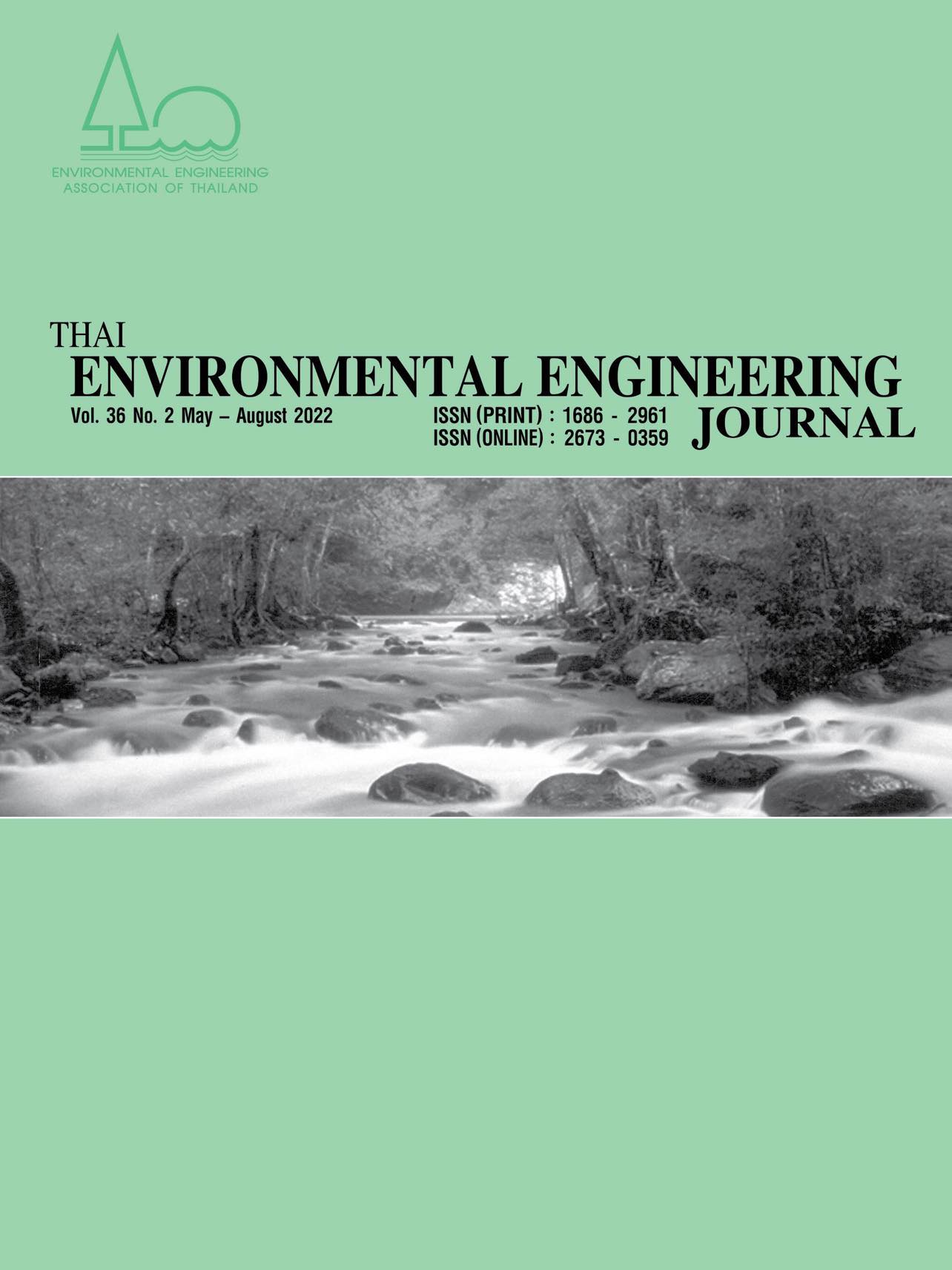A Study of the Treatment Efficiency for the Ozonation Effluent Recycling Process in Cassava Starch Factory
Main Article Content
Abstract
The research was to determine the treatment efficiency for the ozonation effluent recycling process in cassava starch factory. Also, the flow rate entering the process was measured continuously during operating the process. In the process, there were mainly four major components: Section 1, effluent storage pond, Section 2, algae filtration system, Section 3 ozone tank and decomposing pond, Section 4 sedimentation tank and sand filter pond. From study results, it was found that the average flow rate entering the process was 197.86±5.23 m3/hr. Effluent characteristics (before and after) of the ozonation effluent recycling process found that the average pH, total dissolved solid (TDS), chemical oxygen demand (COD) and the suspended solids (SS) were 9.19±0.03 and 8.13±0.03, 2,344±15.00 and 2,445±13.00 mg/l, 213±2.21. and 83±6.31 mg/l, and 112±5.87 and 15±4.39 mg/l, respectively. For COD and SS removal efficiency, the averaged percentages were equal to 61% and 87%, respectively. Overall, all parameters of the treated effluent passed the industrial effluent standard. However, the treated effluent was only used for washing raw cassava due to a quite high TDS. Therefore, a further study on a quality-improvement of the treated effluent, especially TDS, needs to be considered.
Article Details
References
Kunlaya Rojpanit, et.al. 2017. Tapioca Flour Plant Wastewater Treatment with Isolated Effective Indigenous Bacteria from Wastewater. Thai Journal of Science and Technology, 6(2): 140-151.
Gerrity et al. 2014. Applicability of Ozone and Biological Activated Carbon for Potable Reuse, Ozone: Science& Engineering, 36(2): 123-137.
Gerrity et al. 2013. Potable reuse treatment trains throughout the world. Journal of Water Supply: Research and Technology AQUA, 62, 6.
Margot et al. 2013. Treatment of micropollutants in municipal wastewater: Ozone or powdered activated carbon. Science of the Total Environment, 461-462C: 480-498.
Lee et al. 2013. Prediction of Micropollutant Elimination during Ozonation of Municipal Wastewater Effluents: Use of Kinetic and Water Specific Information. Environmental Science and Technology. 47(11).
American Public Health Association, American Water Works Association, and Water Environment Federation (2012) Standard method for the examination of water and wastewater. Ed.22, Washington, DC, USA.
Ministry of Industry. 2017. Industrial Effluent Standards. Notification of Ministry of Industry. Thailand.


